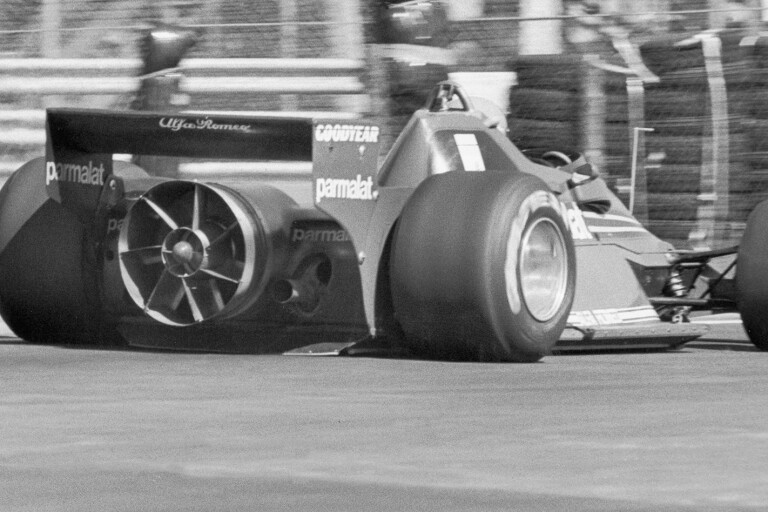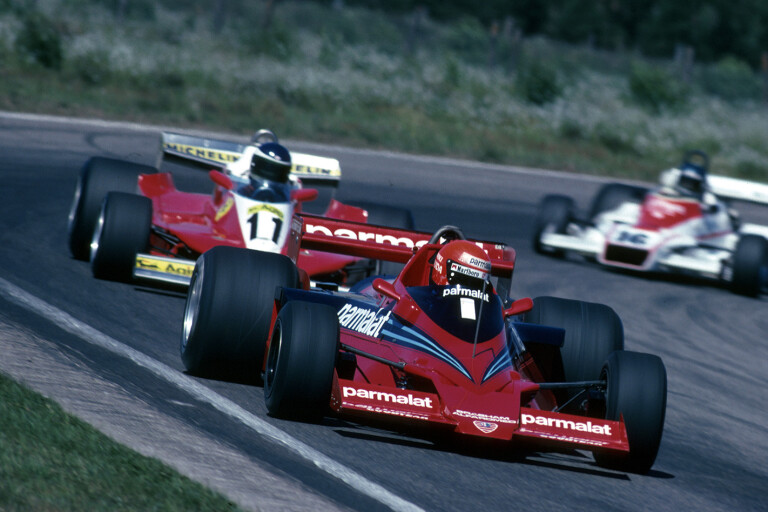
AFTER the 1978 Belgian GP, the sixth round of the F1 World Championship won by Mario Andretti in Lotus's pioneering 'ground effect' car, all the other teams knew their cars were obsolete.
By the eighth round in Sweden, Brabham produced its Lotus-beating BT46B. Using a boldly simple solution, designer Gordon Murray generated low under-car pressure with a large engine-driven extractor fan.

Sucked in was originally published in the November 1994 edition of Wheels
The BT46B won the Swedish GP – to be promptly banned from racing ...
After a difficult 1977 season, Brabham thought it had a winner with its 385kW 3.0-litre Alfa Romeo boxer 12 engines, which had about 30kW more than the best rival Cosworth V8s.
Murray had drawn the aerodynamically and visually stunning Brabham BT46. To cap it off, the team's number one driver from 1977, John Watson, was to be joined by '75 and '77 world champion Niki Lauda.
But it all went wrong. First problem – even before the cars raced – was the failure of the 'surface cooling' system, designed to minimise drag. So while the team fell back on updated BT45s for the first 1978 GPs, the new BT46s had conventional radiators built into their front wings.
The BT46 was not race-ready until round three in South Africa, after which Lauda was joint third on points behind Lotus twins Andretti and Peterson, who were still driving the previous year's cars.
Brabham's next problem emerged when Andretti had his first win with the new '78 season Lotus, which created downforce by lowering under-car air pressure.

Air passed through long tunnels – venturis – formed between the road and the underside of the car's bodywork. These venturis needed the minimum of intrusion by rear-mounted mechanical items like suspension, gearbox and engine.
For Brabham (and rival Ferrari), the boxer 12 engines were a ground effect disaster. Brabham's engine was not merely 75 mm wider than Lotus's Cosworth V8, it was wider where it hurt, down low in the venturi area – and it was also 280 mm longer. The very engine around which the BT46 had been designed now blocked it from harnessing the 'suction' it needed to stay competitive.
Going into the Swedish round, Andretti led with 36 points, Lauda was a distant fifth on 16. The Andretti and Peterson Lotuses had finished 1-2 in the previous two races. Out came
the BT46B ...
Brabham argued it was legal. The rules outlawed "moveable aerodynamic devices" – including fans – only if the primary purpose was aerodynamic.
Primary purpose of the Brabham's fan was to draw air through the new rear-mounted radiator. But its primary effect was to draw the car limpet-like to the track. Lauda's Brabham 'fan car' won. Andretti's Lotus could not catch him.
Noisiest objectors were Brabham's fellow members of the Formula One Constructors' Association, which was Ecclestone's power base in F1 business and politics. A split was avoided. FOCA allowed the car two more races before exile, but FISA banned it immediately anyway, for 'safety' reasons - it sprayed track debris at following cars.
Andretti and Lotus won the '78 title. Brabhams designed by Murray won the title for Nelson Piquet in '81 and 83. By then, Bernie Ecclestone was indisputably in control of grand prix racing.

COMMENTS